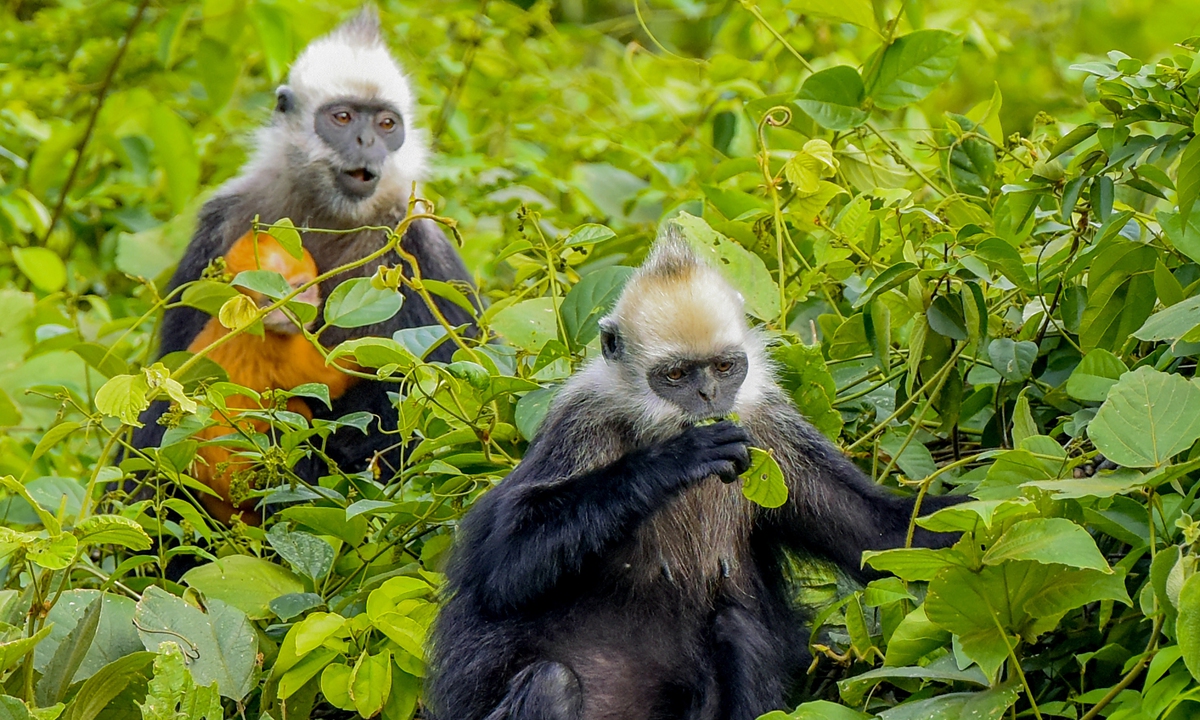ARTS / ART
Wildlife in China: China takes measures to protect last home of white-headed langurs

Two white-headed langurs Photo: IC
Editor's Note:With China as the country of presidency, the second phase of the 15th meeting of the Conference of the Parties to the UN Convention on Biological Diversity (COP15) is set to be held in Montreal, Canada later in December.
This series will show the various animals and plants in China that thrive as a result of the country's efforts in biodiversity conservation and building up sustainability.
It is a common sight to see dozens of white-headed langurs relaxing and eating leaves in the national nature reserve in Chongzuo, South China's Guangxi Zhuang Autonomous Region. The reserve was specially built for these adorable but critically endangered species, which lives in a small habitat in Guangxi.
The IUCN Red List has recognized the white-headed langur as a distinct species since 2012. This species is blackish in color with white crowns, cheeks and necks.
After years of conservation efforts in China, the population of the white-headed langurs has increased from more than 300 individuals in the 1980s to more than 1,200 individuals spread across 130 groups.
The national nature reserve for the species in Guangxi, which is seen as the last home for white-headed langurs in the world, has been playing a significant role in protecting the endangered species.
Diverse measures have been taken in the national nature reserve to protect the species, including building two ecological corridors that help the animals in the national nature reserve safely pass through roads and complete migrations, five water sources and a botanical garden for the white-headed langur's favorite foods.
More than 330,000 square meters of the animal's habitat has been restored by renting land in the area to the nature reserve, according to data from the national nature reserve.
To promote the importance of conserving the species among the public, the national nature reserve also built the country's first museum on white-headed langurs and has been publishing more content about the species on social media platforms so that the public can learn about their habits and life stories.
In the nature reserve area, a remote video surveillance system covering an area of about five square kilometers is able to monitor more than 20 key groups of langurs all day long, greatly improving upon previous monitoring efficiency, the Guangming Daily reported.
Through these endeavors, the image of the white-headed langur has become more familiar around the world.
The mascots of some major international events held since 2004 have been based on the animal.
Global Times



